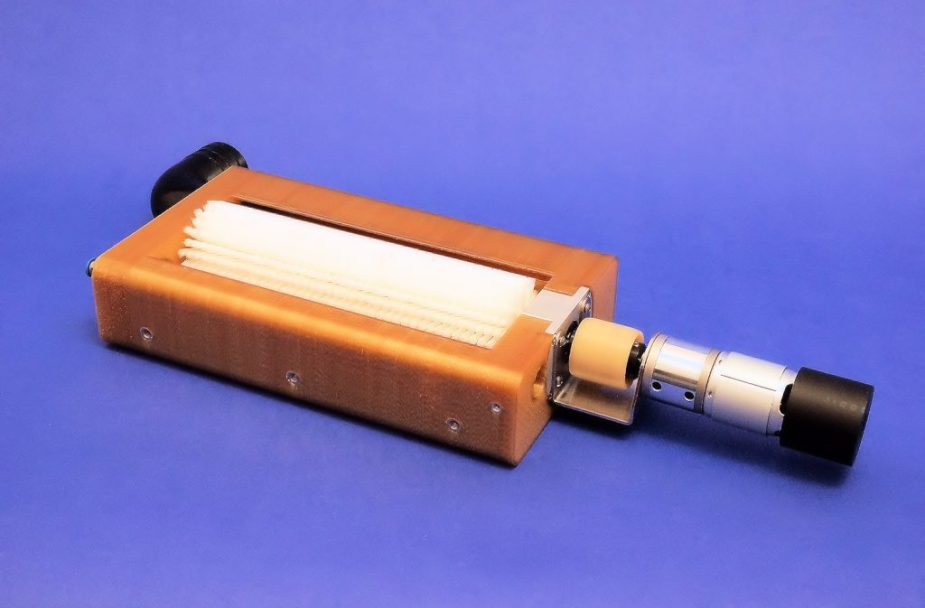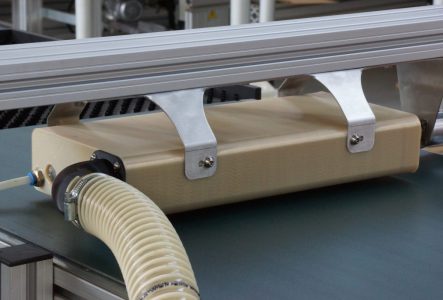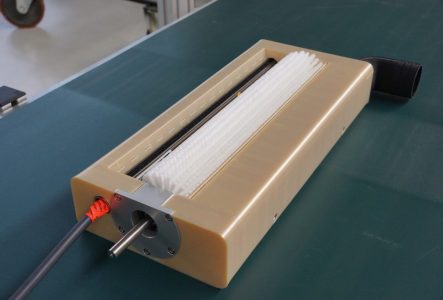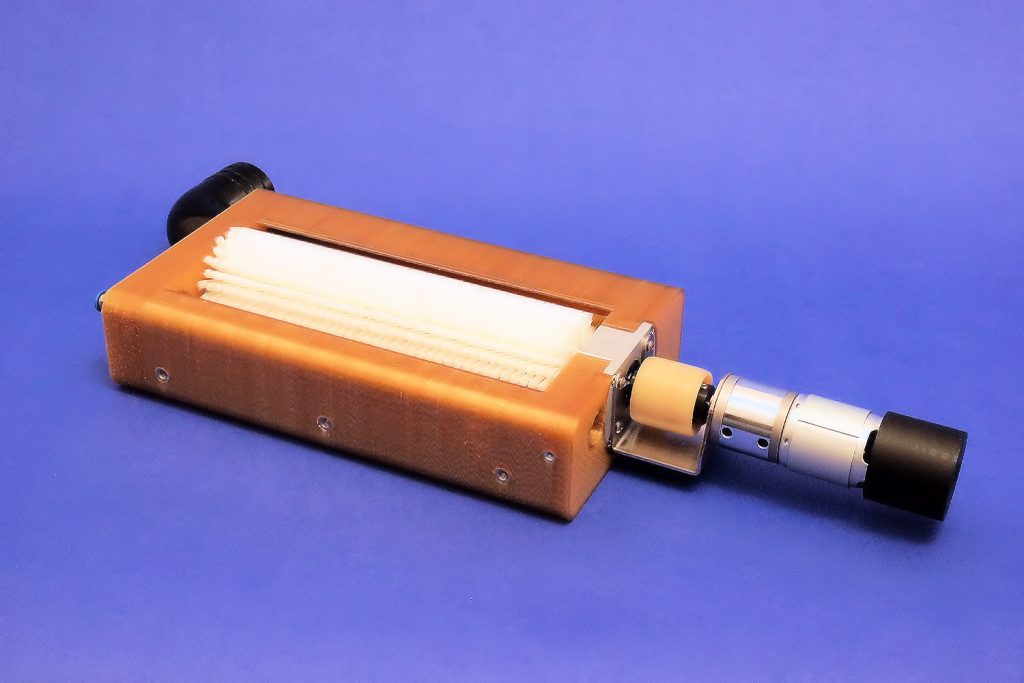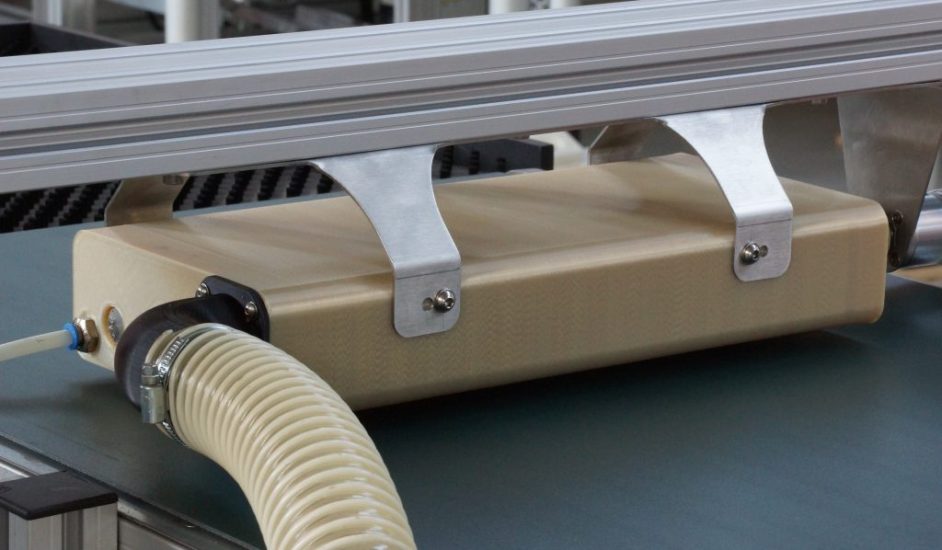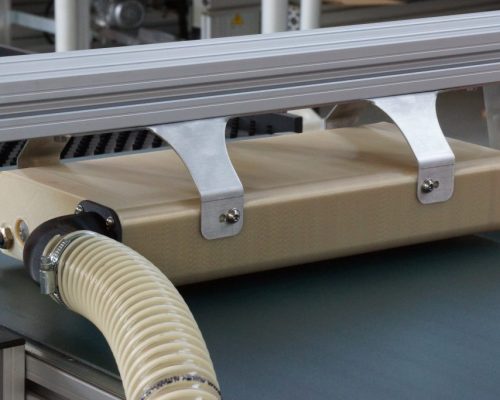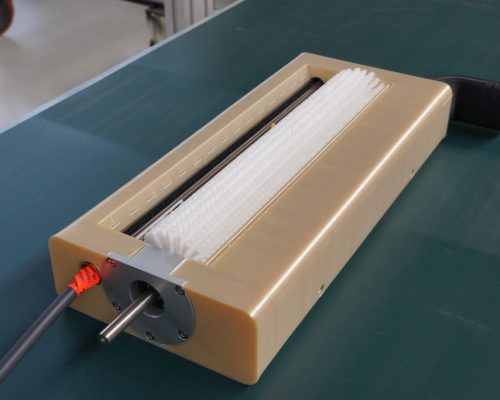DEP070
Generalità
Il DEP070 è una macchina spazzolatrice compatta. Con la sua ridotta sezione trasversale può essere facilmente inserita in qualsiasi linea di produzione. Sono integrati nel corpo: la spazzola D = 70 mm, la barra ionizzante, gli ugelli d’aria e la cappa aspirante. La spazzola è montata su un albero in acciaio inossidabile, può essere movimentata da un motore a 24 V DC o da un motore AC.
Il DEP 070 può avere il corpo e la spazzola per uso alimentare. La spazzola può essere facilmente sostituita utilizzando la flangia estrattiva. Lunghezza di lavoro da 100 a 500 mm.
| SPAZZOLA | a rullo L=100 – 500 mm |
|---|---|
| MOTORE ELETTRICO | 24 V DC oppure 220-380 V CA |
| VELOCITÀ DI TRATTAMENTO | max 200 m / min |
| DIMENSIONI MM | 68 X 180 X L |
Video e immagini
GALLERIA
Vuoi richiedere un’offerta?
Sei interessato a ricevere maggiori informazioni e ad essere ricontattato da un nostro operatore specializzato?
Richiedi ora la tua offerta

Vuoi richiedere un’offerta?
Sei interessato a ricevere maggiori informazioni e ad essere ricontattato da un nostro operatore specializzato?
Richiedi ora la tua offerta
Domande frequenti
Cosa si intende per “Macchine a spazzole”?
Sono macchine che utilizzano spazzole tecniche nel loro processo produttivo.
Quali sono le principali tipologie di macchine a spazzole?
Depolveratori, orientatori, elevatori, trasportatori.
Quali sono i vantaggi di questo tipo di macchina?
Le spazzole industriali sono caratterizzate da una grande adattabilità alle superfici, da grande flessibilità di utilizzo e varietà di forme e durezza praticamente illimitata. Per questo l’uso di spazzole nelle macchine riesce ad essere molto efficiente in numerosi processi industriali.
Quali sono i vantaggi di questo tipo di macchina?
Le spazzole industriali sono caratterizzate da una grande adattabilità alle superfici, da grande flessibilità di utilizzo e varietà di forme e durezza praticamente illimitata. Per questo l’uso di spazzole nelle macchine riesce ad essere molto efficiente in numerosi processi industriali.
In particolare i depolveratori con spazzole sono più efficienti di quelli tradizionali senza contatto, mentre nel caso degli orientatori le spazzole sostituiscono altre tecniche (aria compressa, vibrazione ecc.) riuscendo a trattare i pezzi con bassi consumi energetici, in modo delicato e silenzioso. L’ingombro ridotto è un altro importante vantaggio.
Le spazzole contenute nelle macchine possono causare contaminazione del prodotto per perdita di filamento?
Può succedere solo se la spazzola si danneggia per una causa imprevedibile, come un prodotto difettoso che entra nella macchina e si incastra nella spazzola distruggendola, come d’altra parte può avvenire per ogni altro tipo di particolare presente nella macchina. Va ricordato che lo stesso tipo di spazzola viene correntemente utilizzato in campo farmaceutico ed alimentare senza problemi.
Le vostre macchine sono economicamente competitive?
Parlando dei depolveratori sono sicuramente più economiche rispetto ai principali concorrenti.
Per quanto riguarda gli orientatori sono allineati, ma se si guarda al risparmio energetico e di spazio risultano anch’essi più vantaggiosi.
Come avviene la scelta tra i vari modelli di depolveratori?
Il cliente ci invia qualche pannello (lastra, film, ecc.) che viene trattato in laboratorio con vari depolveratori, in modo da scegliere quello che dà i migliori risultati. I campioni trattati vengono poi esaminati dal cliente per approvazione.
E’ possibile testare un depolveratore prima dell’acquisto?
Generalmente abbiamo a disposizione dei depolveratori per test sul campo, che possono essere inviati al cliente per limitati periodi di tempo.
E’ necessario il vostro intervento per installare un depolveratore su una linea produttiva?
No, l’installazione viene fatta direttamente dal cliente vista la sua estrema semplicità. Naturalmente occorre prima valutare gli spazi disponibili sulla linea, che a volte contribuiscono alla scelta del depolveratore stesso.
Ogni quanto tempo occorre sostituire le spazzole?
Non esiste una risposta univoca, dipendendo questo tempo da molti fattori, come velocità del prodotto, materiali, pressione, turni di lavoro, ecc. Come indicazione di larga massima si può dire che un set di spazzole può durare tra uno e due anni, a volte di più.

